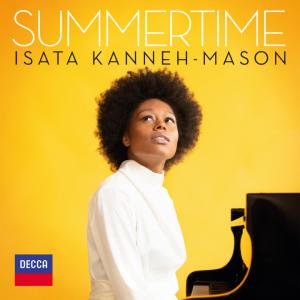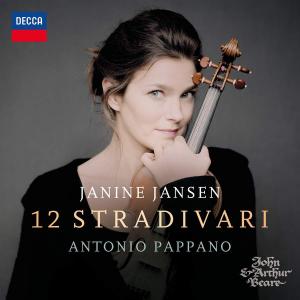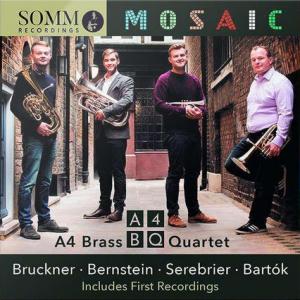 CD Review - Jean-Yves Thibaudet
CD Review - Jean-Yves Thibaudet
Carte Blanche
Decca 485 2081 [79:09']
When those nice people from Decca, with an eye to business, invited the virtuosic French-American pianist Jean-Yves Thibaudet to record his own personal selection for an album celebrating his 60th birthday, they might have shown even more potential sales optimism
Ernest Tomlinson
Naxos 8.555190 [72’21”]
Our hopes fulfilled: we have not had to wait long for Vol.2 of ‘British Light Music’ and – after Addison – it looks as if the series is going to be in alphabetical order.
Rose-Marie
(Friml,Harbach,Hammerstein II)
Billy May’s Orchestra
Analysed by Robert Walton
Right in the centre of a collage created by my wife of my personal and professional life, is a photograph of me holding a 10 inch 1950’s 78rpm disc of Billy May’s Rose-Marie. This was around the time the long playing disc first saw the light of day. It represented one of the first highly technical big band recordings on a 78, standing out as something really special.
Rose-Marie
(Friml,Harbach,Hammerstein II)
Billy May’s Orchestra
Analysed by Robert Walton
Right in the centre of a collage created by my wife of my personal and professional life, is a photograph of me holding a 10 inch 1950’s 78rpm disc of Billy May’s Rose-Marie. This was around the time the long playing disc first saw the light of day. It represented one of the first highly technical big band recordings on a 78, standing out as something really special. Capitol Record’s engineers had somehow managed to put all that brass and saxophones on to a simple 78, sounding a million miles from the 1940s. It was as if a brand new era had emerged. In fact it almost gave the impression of stereo on a 78. One wonders had the new 78 technology arrived earlier in the previous decade, would Stan Kenton have benefited?
When I was working in radio at Station 1ZB Auckland in 1955, there was a strict policy of the sort of music to be selected for the morning Breakfast Session. Nothing too noisy or jazzy was permitted. Music of a calm and cheerful mood was the order of the day, like Powder Your Face with Sunshine, Manhattan Playboy, or Dear Hearts and Gentle People. One morning (you’ve guessed it) a record planner had inexplicably included Rose-Marie in the mix. By the time the Head of Programmes and Station Manager arrived at the beautiful Art Deco building for work, they were absolutely apoplectic. The planner almost lost his job! That was the only time Billy made the Breakfast Session! Great dance music it certainly was but more suitable for late night consumption.
Billy May was perhaps the most versatile arranger of them all. An early outstanding chart was Carnival by two Harrys: composer Warren and trumpeter James. Then there were those brilliant scores for the Sparky Children’s Series. But May is best remembered for his glissing unison saxes, reviving Jimmy Lunceford’s lightly swinging style. Sometimes May was more “Nelson Riddle” than Riddle with Autumn in New York and Moonlight in Vermont for Frank Sinatra. However, simple tunes like Friml’s 1924 Rose-Marie proved to be ideal for May’s style, in fact even in the 21st Century that style is still the standard sound for any big band.
The opening trumpets with some perfectly placed piano comping is as fresh today as it was then. The slurping saxes take a turn at the tune, but when the brass return for the finale the orchestra erupts into a virtual volcano. On the San Andreas Big Band Fault Line, May’s outburst will remain etched on the memory forever!
Billy May “Naughty Operetta” EMI 4 98836 2
 CD Review – Janine Jansen
CD Review – Janine Jansen
12 Stradivari
Antonio Pappano
Decca 4851605 [59:24]
This is one extraordinarily exciting release. Although there is only a single piece of pure light music – Jerome Kern's Yesterdays, arranged by Fritz Kreisler – it should be of fascinating interest to all lovers of the violin...
 The talented pianist, singer, arranger and composer Barbara Moore has died after a long illness, aged 89. Born in Yorkshire, Barbara was the daughter of saxophonist and arranger Arthur Birkby. She was an early member of The Ladybirds backing group.
The talented pianist, singer, arranger and composer Barbara Moore has died after a long illness, aged 89. Born in Yorkshire, Barbara was the daughter of saxophonist and arranger Arthur Birkby. She was an early member of The Ladybirds backing group.
As well as composing music for commercials and the De Wolfe Music Library, she wrote the new, up-dated arrangement for Brian Fahey's celebrated signature tune At The Sign Of The Swinging Cymbal, still used on BBC Radio 2's Pick Of The Pops. She later worked with Jimi Hendrix, Dusty Springfield, Elton John, Tom Jones and Dudley Moore, with whom she became a close friend.
At one time Barbara was married to arranger Pete Moore (1924-2013), former Head of Orchestrations at Radio 2; their daughter Lindsay sadly died in her 40s.
In her later years Barbara moved to the coastal town of Bognor Regis, where she became a well-known personality, performing locally and lecturing at the University of Chichester.
https://www.barbaramoore.co.uk/
Anthony Wills
© August 2021
This year's releases get better and better. The Divine Art label – located in "God's own county" of Yorkshire – has recorded for our delight this attractive disc of melodic Russian/Slav music.
Robert Farnon’s arrangement analysed by Robert Walton
Robert Farnon had the unique ability to bring out the best in a song by always treating it with the utmost respect in terms of its original style, by adding just the right amount of modernism and freshness. In other words he was guided intuitively by his byword: “taste”.
Sweet And Lovely
(Gus Arnheim, Harry Tobias and Jules Lemare)
Robert Farnon’s arrangement analysed by Robert Walton
Robert Farnon had the unique ability to bring out the best in a song by always treating it with the utmost respect in terms of its original style, by adding just the right amount of modernism and freshness. In other words he was guided intuitively by his byword: “taste”. At the same time he was constantly ahead of the game with his original and daring orchestrations. Even now in the 21st century they still sound advanced.
The utter simplicity of the start of Sweet and Lovely, like one of his own light orchestral miniatures, belies the fact that from thousands of musical ideas going around in his head, he only selected sounds that were totally appropriate for the current job in hand. In his own world he was a self-disciplinarian knowing instinctively how far to go. He was never tempted to stray too far into foreign territory. Despite that, Farnon constantly relished discovering new things to say in his “travels into tunes”. It was probably the unusual harmony that first attracted him to this early ballad.
This 1931 ditty was the “sweet and lovely” theme song of Gus Arnheim’s Orchestra. The first recording was by his orchestra featuring vocalist Donald Novis but it was Bing Crosby and Russ Columbo who brought it to a wider audience.
After that haunting introduction, lightly swinging woodwind go straight into Sweet and Lovely for a double whammy of song and arrangement providing a romantic slow foxtrot with some decorative glockenspiel. A harp heralds the first appearance of the famous Farnon fiddles (“Who would want a sweeter surprise”). Staying with the strings a gentle cutting oboe continues the tune.
Then a muted trumpet advises that the bridge is ready for crossing with the saxes making the first move towards a beautifully controlled orchestral climax.
Back to the tune as thin-sounding ethereal violins on the same note shoot up high with the help of harmonics to have a commanding view over the proceedings. Frolicking flutes make themselves felt in no uncertain terms. Then another reminder of that warm Farnon harmony. The brass is back with the strings making a typically gorgeous key change like no one else in the business. The saxes are heard again and gradually the orchestra returns with the brass.
By now it becomes all too clear that Farnon’s arrangement of Sweet and Lovely is an excellent example of a series of thrilling climaxes. The orchestra sounds completely relaxed as it tags along for the ride, enjoying the many “swells” which abound. Strings, oboe and a violin playing the title in atonal style are parachuted into the coda mix. Talking of keyless music, Robert Farnon’s charts are famous for teetering on the edge of atonality, like a high wire act. That’s why his arrangements have an air of mystery and “what’s he going to do next?” about them. In retrospect, these early popular standards have proved to be perfect vehicles for Farnon’s inventiveness.
 Somm Recordings SOMM D0638 [70:59]
Somm Recordings SOMM D0638 [70:59]
'Here is another slightly left-field release of the kind that makes this label so fascinating. It will definitely be of interest to lovers of brass bands and, indeed, anyone who favours instruments being blown rather than bowed. So, we have the principals from four of the UK's top bands, including Black Dyke, Foden's, and Brighouse & Rastrick … don’t know why the fourth gets no mention.


